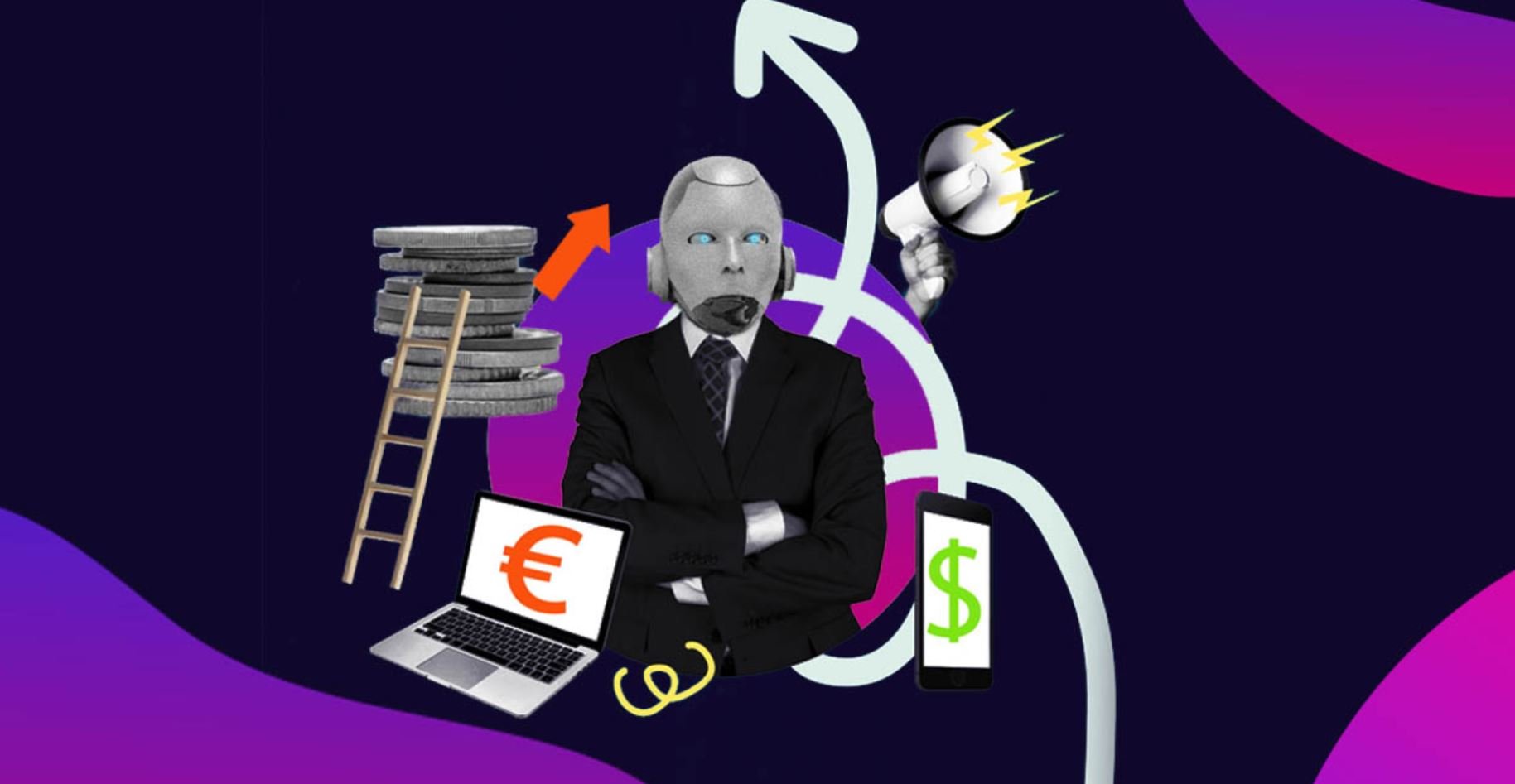
The use of AI in many industries is no longer a surprise, nor is it a trend. It is now a way of life for many companies and will continue to be so for years to come. Because of this, you may have wondered about using the technology to boost your business reach. Here’s a guide on how you can use AI in advertising and marketing your brand.
Table of Contents
- What Is AI Advertising?
- Advantages of Using AI in Advertising
- The Challenges in Using AI in Advertising
- The Right AI Tools for Advertising
- AI for Writing Ad Copy
- AI for Creating Ad Images
- AI for Ad Placements
- AI for Ad Budget Management and Optimization
What Is AI Advertising?
We all know by now that AI learns from the data it gathers online. It analyzes vast amounts of information, identifies patterns, and makes predictions. AI in advertising means exploring user data and behavior to entirely understand their interests, preferences, and pain points. This allows you to use AI tools, from writing your ad copy to creating campaigns and analyzing their performance.
The following are key AI technologies that facilitate advertising:
Machine Learning (ML): Machine learning algorithms analyze data from user demographics, browsing history, and past interactions, allowing them to create audience profiles that predict their responses to ads.
Natural Language Processing (NLP): This is the technology that lets AI understand and interpret human language. It analyzes text from search queries, social media, and reviews to grasp user sentiment and preferences. This is what will help you create relevant and engaging ad copy.
Computer Visions (CV): This is what enables AI to interpret visual information from images and videos found online. It automatically analyzes user browsing habits to determine the types of visuals they engage with and generate targeted ad visuals based on these preferences.
These technologies are already being used in real-world ad campaigns. The following are a few use examples:
E-commerce platforms: These use AI to recommend products and services based on consumers’ past purchases and browsing history. This will help you showcase personalized ads for items your customers may be interested in.
Social media platforms: These use AI to create personalized ads based on user behavior. A home improvement enthusiast who often searches for tools will get shown ads for specific brands or events related to DIYing.
Streaming services: These use AI to recommend movies and TV series based on your customers’ viewing habits. This will let you target your ads based on what viewers will most likely watch next.
Advantages of Using AI in Advertising
Using AI in your advertising efforts offers a myriad of benefits. Below are some of the most crucial:
Effective targeting and personalization: Data is vital in any advertising effort as it can predict consumer behavior. This allows business owners to go beyond generic advertising. With the help of AI tools, they can deliver highly targeted ads that resonate with their specific marketing segments. This results in higher relevance and more personalized ads that engage and convert.
Enhanced creative development: You can use AI to help you in the creative process by generating ad copy, visuals, and video content. For businesses with limited resources or tight schedules, AI can help streamline the development of your creative assets.
Better conversion rates: When you can create targeted ads that are more efficient at a fraction of the time, you save time and money. This gets you more qualified leads, which, in turn, results in better conversion rates. This optimizes your return on investment (ROI) on your ad campaigns.
Increased automation and scalability: AI can automate tedious and repetitive tasks involved in advertising. It is effective in ad bidding, reporting, analytics, and audience segmentation, among many others. This leaves you free to take on more substantial business matters.
Gives you access to valuable customer insights: AI can provide insights into your customers’ minds. With it, you’ll be able to learn about their preferences and needs. This deep understanding enables you to create effective ad campaigns to build stronger customer relationships.
Real-time ad campaign optimization: AI algorithms help improve your campaign performance by analyzing your data, identifying patterns, and making adjustments in real-time. With AI, you’ll know your campaigns are reaching the right audience with the most suitable messaging at the right time.
The Challenges in Using AI in Advertising
While the advantages are innumerable, AI also poses some challenges. Here are a few:
Inaccurate data: AI is still developing and is still not as reliable as we want it to be. This is the reason you can find many inaccuracies in the responses you get from it. In advertising, AI-generated results will only be effective if the data we put in are accurate. You still need to verify the data’s accuracy to ensure they are factual and authentic.
Zero creativity: AI can be a powerful tool for many advertising-related tasks. However, it lacks creativity when crafting your ad visuals. As mentioned earlier, AI gets its data from the information it gathers online. Therefore, it can generate designs based on existing styles and trends but can not create originals or even come up with fresh concepts.
Privacy and transparency concerns: AI collects and analyzes vast amounts of data to craft personalized ads. This raises concerns about user privacy as it may inadvertently collect sensitive information about consumers. To avoid this from happening, you need to ensure transparency in the data collection processes. You should also get informed consent and adhere to data privacy regulations to build trust with your audience.
Always keep in mind that you should never rely solely on AI for your advertising. The human touch is a priceless commodity you shouldn’t give up on.
The Right AI Tools for Advertising
AI can help with advertising your business in many ways. Below are a few AI tools you can use for varying advertising purposes:
AI for Writing Ad Copy
Ad copy is one of the most crucial elements of advertising. You use it in your email communications, lead generation, blogging, social media, and website content, among many other uses. It has to be compelling, or you risk losing customers. The good thing is that you can get AI tools to do these tasks for you. Below is a short list:
ChatGPT: This is probably the most talked about AI tool for writing content. It is free and has a very low learning curve. It can generate human-like text that many businesses use to write content or to provide customer support. It can also create images but will only give you mediocre work.
Jasper: Another popular name in AI content creation, Jasper can generate all types of content, including advertising copy. Its biggest downside is its pricing. Its lowest-priced plan costs $49 per month per seat.
AI for Creating Ad Images
Visual assets such as images or videos are a key component of any ad campaign. If you want to use AI to generate these, you can choose from the many available online. We found two worth checking:
LightX: If you’re looking to create ads in seconds, LightX is the AI tool you need. You can upload a product photo, and the software will tweak it for you depending on your purpose. You can choose from Showcase, Promotion, Sale, or Highlight, and the app will generate a quick ad for you.
Quickads: Not only can you create ad images with Quickads, but you can also write copy with it. It can also help you maintain your brand identity, among its many other helpful features. It has a free version and also a paid one that costs only $99 per month.
AI for Ad Placements
If you want to make the process of buying and placing ads faster and more efficient, use the following AI advertising tools:
StackAdapt: An AI tool that can help you plan, launch, and analyze your campaign. StackAdapt uses real-time, data-driven audience targeting to let you place ads on websites where your audience hangs out the most. And since it is a native advertising platform, it will make your ad appear to blend in with whatever website you place it on.
GumGum: Using AI and machine learning, GumGum is a programmatic ad tool, which means it uses automated technology and algorithmic tools for media buying. It analyzes your target audience’s data and behavior to give insights on where and when to place your ads to get optimum engagement and results.
AI for Ad Budget Management and Optimization
There are AI-powered tools that can help you manage and optimize your ads. The following are excellent examples:
IBM Watson Advertising: Equipped with tools and capabilities for intelligent targeting and audience segmentation, real-time campaign optimization, and reporting and insights, among others. You can also use this AI tool to generate ad content such as copy, images, and videos.
AdRoll: Created specifically for managing eCommerce businesses, AdRoll lets you set individual campaign budgets. It has budget-pacing features that allow you to control your spending throughout your campaign period. It also has advanced targeting options to reach your ideal audience and many other ad-optimizing features.
Final Thoughts
AI is indeed a powerful tool that’s now being used in almost all industries. AI in advertising is now the norm instead of the exception, and you need to leverage it to avoid being left behind. To fully utilize its amazing features, you should always keep in mind that these are tools to improve your processes. They are not a replacement for the human touch.
About the author

Celeste Zosimo
Celeste is a former traditional animator and now an SEO content writer specializing in graphic design and marketing topics. When she's not writing or ranking her articles, she's being bossed around by her cat and two dogs.










